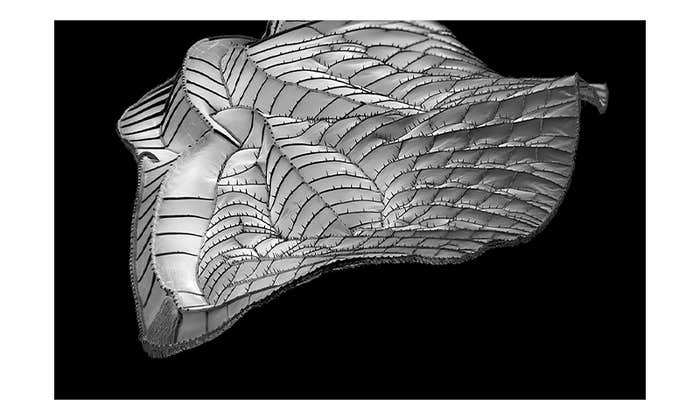Some time after he completed his first portrait, in 1909, Oskar Kokoschka realized that “in my haste, I painted only four fingers on the hand he lays across his chest.” He was referring to The Trance Player, a painting of his friend, an actor. “Did I forget to paint the fifth?” Kokoschka wondered. “In any case, I don’t miss it. To me it was more important to cast light on my sitter’s psyche than to enumerate details like five fingers, two ears, one nose.”
This indifference to anatomical accuracy wasn’t unique to Kokoschka. “Many artists reconsider the pursuit of external likeness—portraiture’s usual objective—within formal or conceptual explorations or reject it altogether,” states the web site of the Whitney Museum of American Art’s current exhibition, Human Interest: Portraits from the Whitney’s Collection; it showcases portraits dating from Kokoschka’s time up to the present. “Once a rarefied luxury good,” the site states, “portraits are now ubiquitous.”
It could have added that portraits are no longer restricted to just still images. Take the work of Bo Gehring. His video portraits offer an uncanny perspective on the human body and, in some measure, the mind. Once an electrical engineering student at Cornell University, he left after taking an interest in design. (He’s worked as a Hollywood animator, created metal sculptures, and transformed music into 3-D surfaces.) One day, he was looking at a milling rig and “realized it would make a precision camera like no other,” he says. “The idea of close-up motion portraits came right to mind.” In 2013, he won the Smithsonian National Portrait Gallery’s Outwin Boochever Portrait Competition with his newfound technique. It led to the Smithsonian commissioning Gehring to make a portrait of Grammy Award-winning jazz musician Esperanza Spalding.
In his video portraits, a person lies flat on a low table while a camera, mounted on a track, hangs above them. It begins recording just below their feet, pointing straight down, and steadily crawls up their body. As this goes on, music plays, something Gehring’s subject has chosen to hear. The speed of the camera’s pan is proportional to the length of the music and the subject’s height, so that the film ends with the camera’s view above the head, just as the music fades.
The resulting perspective feels like something out of a hospital, such as the overhead view of someone getting a full-body PET scan. Gehring’s portrait adds a playful sense of anticipation and sensuality. As the camera reaches the heart and head, the traditional zone of a portrait, you wonder how the subject’s music of choice has affected their mood, and what facial expression awaits—will it be deliberate and posed, or spontaneous? It’s a really uncanny way to see another person.
For Spalding’s 2014 shoot, she chose to listen to “Tarde,” by Wayne Shorter—“one of the greatest saxophone players of all time,” she says. She wore a skirt stitched with sustainable materials that resembles Ibrahim Mahama’s Out of Bounds, a monumental patchwork mosaic installation of jute sacks, shown at the 2015 Venice Biennale. Both textile works are expressions of the artists’ social and environmental ethics. But what helps distinguish the two, thanks to Gehring’s camera, is the near unnatural level of detail visible in Spalding’s skirt. The effect is “like watching a thousand paintings go by as the music plays,” Gehring said after Spalding’s shoot.
“When the camera moves at a regular pace, you forget about it,” he says. “The idea was to capture this extraordinary amount of detail focused on the music and make the camera disappear.” Spalding’s portrait can be seen live at the National Portrait Gallery in Washington, D.C.—and below, from the comfort of your computer.
Gayil Nalls, PhD, is a New York based interdisciplinary artist and theorist. Follow her on Twitter @olfacticinkblot and @themassinglab.




























